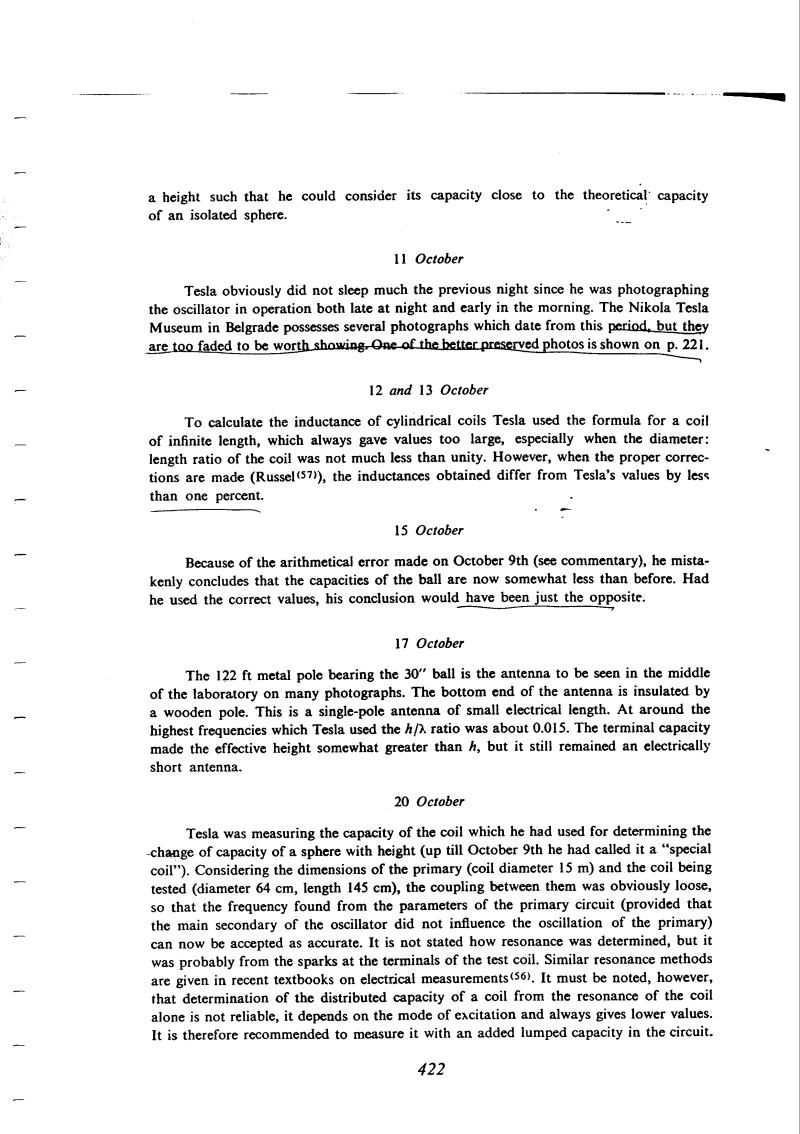October 20
Tesla was measuring the capacity of the coil which he had used for determining the change of capacity of a sphere with height (up till October 9th he had called it a âspecial coilâ). Considering the dimensions of the primary (coil diameter 15 m) and the coil being tested (diameter 64 cm, length 145 cm), the coupling between them was obviously loose, so that the frequency found from the parameters of the primary circuit (provided that the main secondary of the oscillator did not influence the oscillation of the primary) can now be accepted as accurate. It is not stated how resonance was determined, but it was probably from the sparks at the terminals of the test coil. Similar resonance methods are given in recent textbooks on electrical measurements(56). It must be noted, however, that determination of the distributed capacity of a coil from the resonance of the coil alone is not reliable, it depends on the mode of excitation and always gives lower values. It is therefore recommended to measure it with an added lumped capacity in the circuit.


